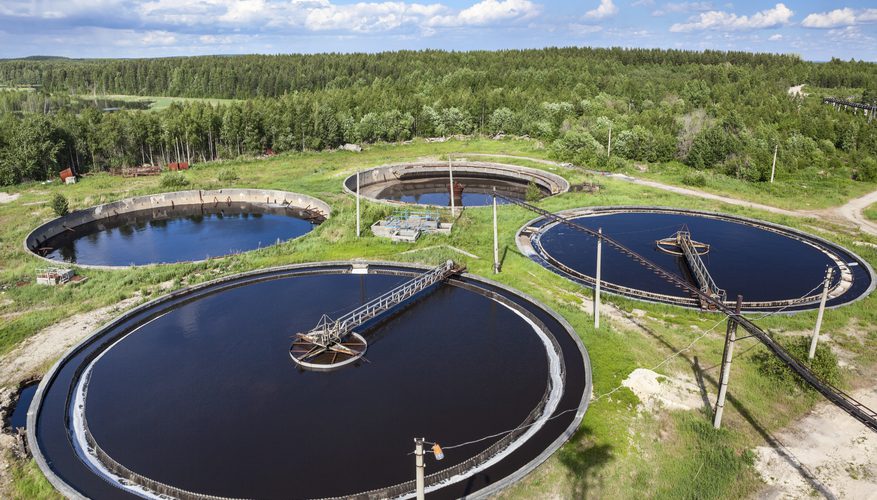From Guest Blogger Emily Folk: Energy Saving Wastewater Treatment Methods

Researchers and engineers are continuously working on new technologies and approaches for treating wastewater. Many of these wastewater treatment methods can reduce the amount of energy needed for treatment, decreasing its costs and environmental impact as well. Here are four of those methods.
1. Thin-Film Membranes With Nanopores
One of these advanced approaches involves nanotechnology, which involves working at the nanoscale. One nanometer equals one billionth of a meter. For reference, a sheet of newspaper is around 100,000 nanometers thick.
Desalination, removing salt from brine or seawater, is typically extremely energy-intensive. Using nanotechnology, engineers have developed a thin-film membrane that reduces the energy required for desalination. The molybdenum disulfide (MoS2) membrane uses nanopores and can filter two to five times more water than standard filters.
As water demand rises around the world, desalination may become a more important source of drinking water around the world, so it’s important that we improve the efficiency of the technology.
2. Porous Ceramic Membranes
Most wastewater treatment facilities use polymer or ceramic tubular membranes, but engineers and material scientists are working to develop new porous ceramic membranes that can help treatment plants reduce their energy consumption.
The UK-based company Morgan Technical Ceramics is developing such membranes that have a filtration layer that’s about the size of a quarter of the diameter of a human hair. Systems that use these membranes could more efficiently circulate water and be more energy-efficient to clean. The ceramic membranes are capable of flexible, innovative designs and can be designed to tight tolerances. They are also reliable and could reduce the need for maintenance.
3. Biomimetic Membranes
Biomimicry, which takes inspiration from nature when creating products, is another field that is working to improve the energy efficiency of wastewater treatment. One such innovation is the biomimetic membranes, which emulates a process that occurs on a cellular level — the one that enables water to transport across the cell membrane.
Researchers are working on using aquaporin molecules, proteins that enable water to pass through cell walls, for wastewater filtration. The protein allows water through but rejects contaminants. It can filter out everything from the contaminants that cause hard water to molecules that are too small for conventional membranes to filter efficiently. Even though water molecules move through the protein channel one by one, as many as a billion can pass through per second.
Researchers say these biometric membranes could increase the energy efficiency and effectiveness of wastewater treatment.
4. Constructed Wetlands
Another form of biomimicry is occurring on a much larger scale. Wetlands are natural water filters, and some local governments are taking advantage of this fact by creating constructed wetlands to treat wastewater. These wetlands are designed to use natural functions, such as vegetation, soils and microbes, to filter water. Wastewater flows through a pipe and gets distributed across the wetland, which has a plastic liner to prevent leaks. The water may flow on top of the soil or beneath its surface through gravel or another porous material.
These constructed wetlands cost less to build and operate than traditional wastewater treatment plants. They might not be suitable for filtering some more complex contaminants and some areas might not have the necessary land, but for those that can build them, they dramatically decrease energy costs.
Wastewater treatment is a necessary aspect of our lives, but it can be expensive and energy-intensive. Treatment technology is progressing, though, and become more efficient, affordable and environmentally friendly.

At least we’re making progress! Especially with Trump as president. You’d think that he would want to invest in the future, but that’s clearly not the case.
Emily,
Thank you for your interesting and informative contribution.